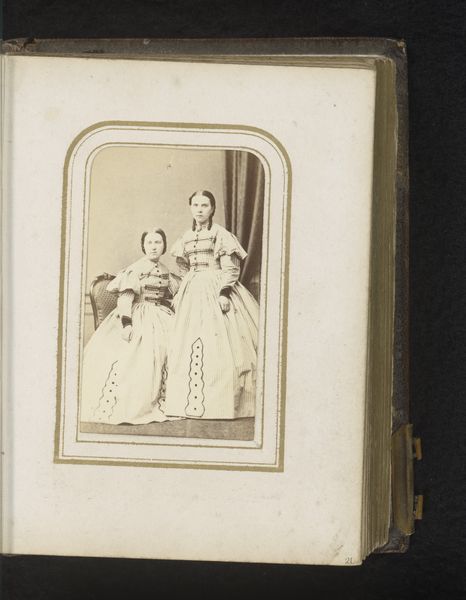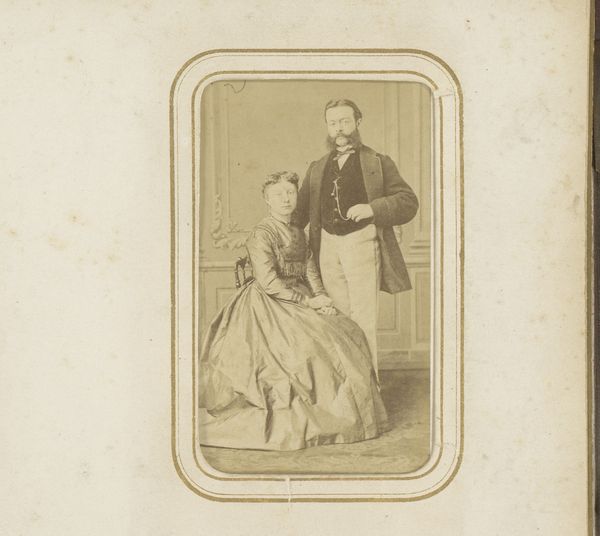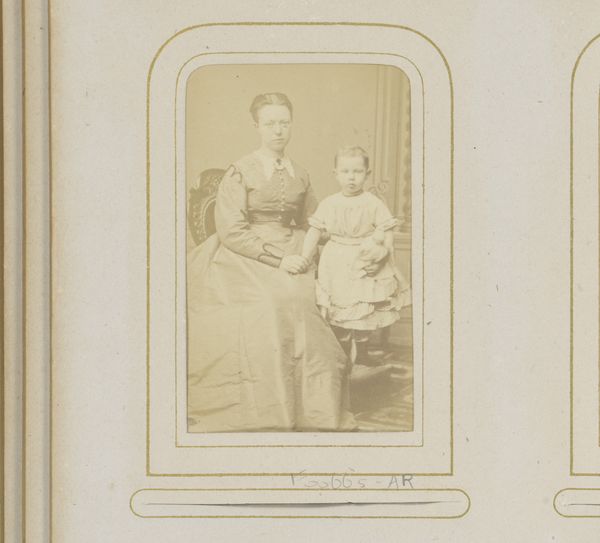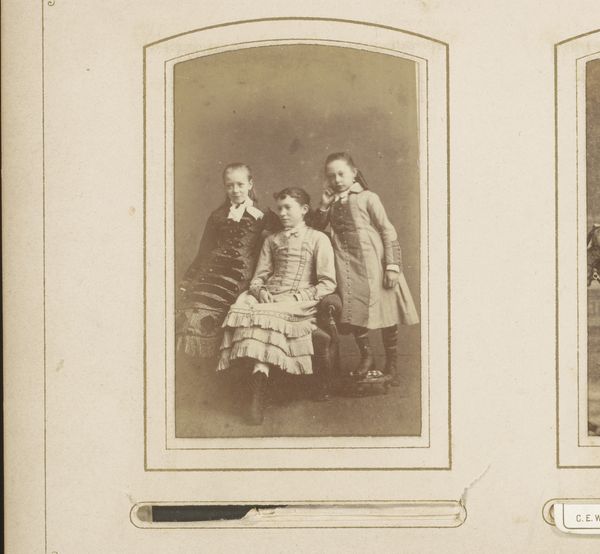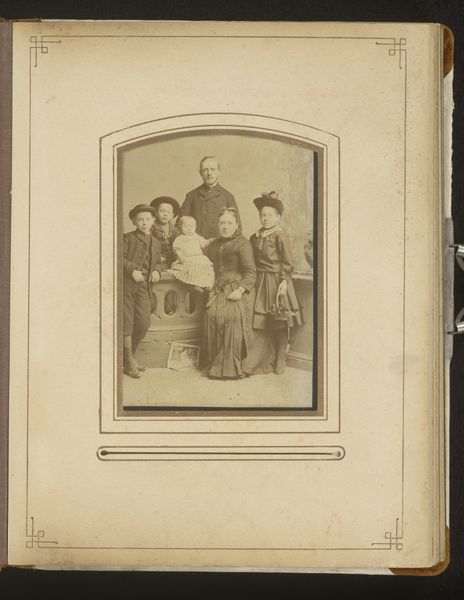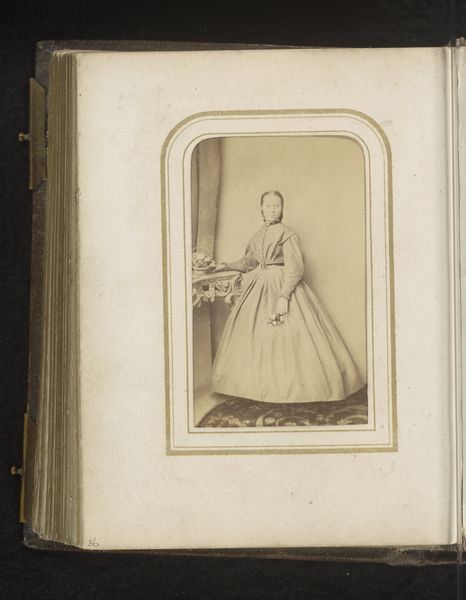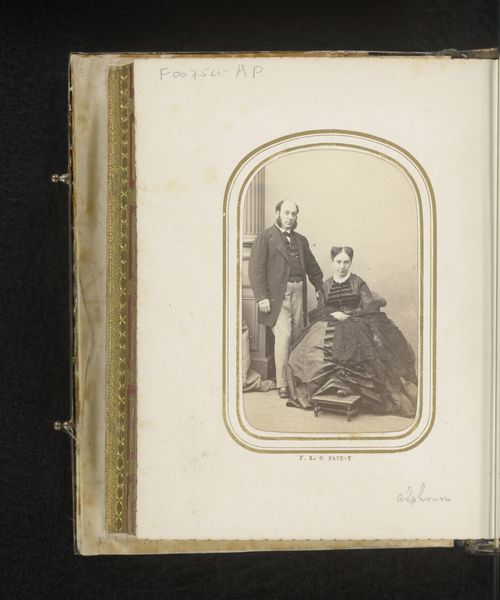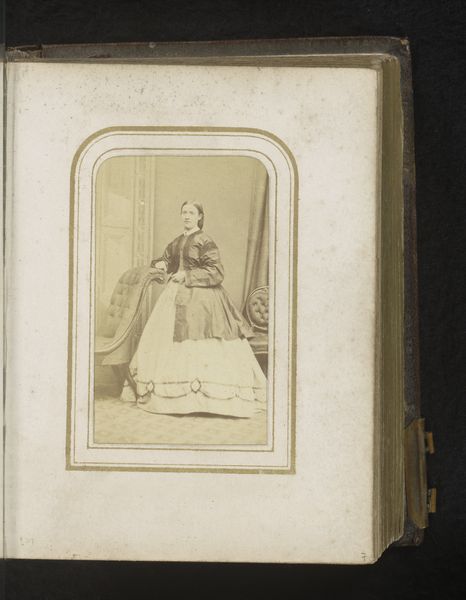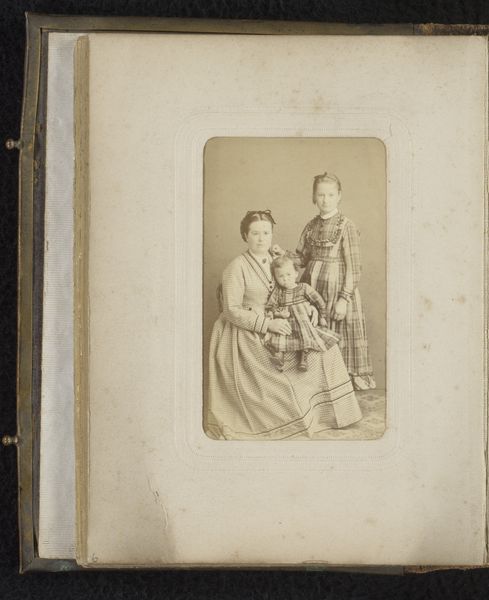
Portret van een zittende vrouw en een staande jongen en een staand meisje 1860 - 1900
0:00
0:00
photography, albumen-print
#
portrait
#
photography
#
coloured pencil
#
genre-painting
#
history-painting
#
albumen-print
Dimensions: height 83 mm, width 51 mm
Copyright: Rijks Museum: Open Domain
Editor: This is an albumen print entitled "Portret van een zittende vrouw en een staande jongen en een staand meisje," dating from between 1860 and 1900 by Christian Dannhof. The photo captures a family group, but their somber expressions make me wonder about the context. What stands out to you? Curator: I see a carefully constructed presentation of family and societal roles within a specific historical frame. Looking at this image, I immediately think of the power dynamics at play. Who is seen, how are they posed, and what does that say about their roles within the family and the broader social structure? Consider the mother at the center, seated, anchoring the composition. Editor: It does feel like she is the center, and the two children are on either side of her. What does that tell us about the children? Curator: Think about the positioning. The boy, slightly behind and to the side, is entering into the more formal, public sphere of manhood, whereas the girl, still visually connected to the mother through posture, and through her positioning forward. What I'm suggesting is how even in ostensibly neutral family portraits like this, we find echoes of gendered expectations and constraints. Photography here becomes a tool not only to document but also to subtly enforce these roles. It begs the question: whose narrative is truly being captured? Editor: That's a perspective I hadn’t considered. So even something seemingly straightforward like a family photo is actually full of underlying social messages. Curator: Exactly! These images are invaluable documents, but they must be interrogated. How are race, class, gender, and ability represented? What does the image obscure or omit? It's about understanding not just what's visible but what remains unseen or unheard. Editor: It is about learning to read the layers beneath the surface of the image. Curator: Precisely. Now you are seeing with new eyes!
Comments
No comments
Be the first to comment and join the conversation on the ultimate creative platform.


